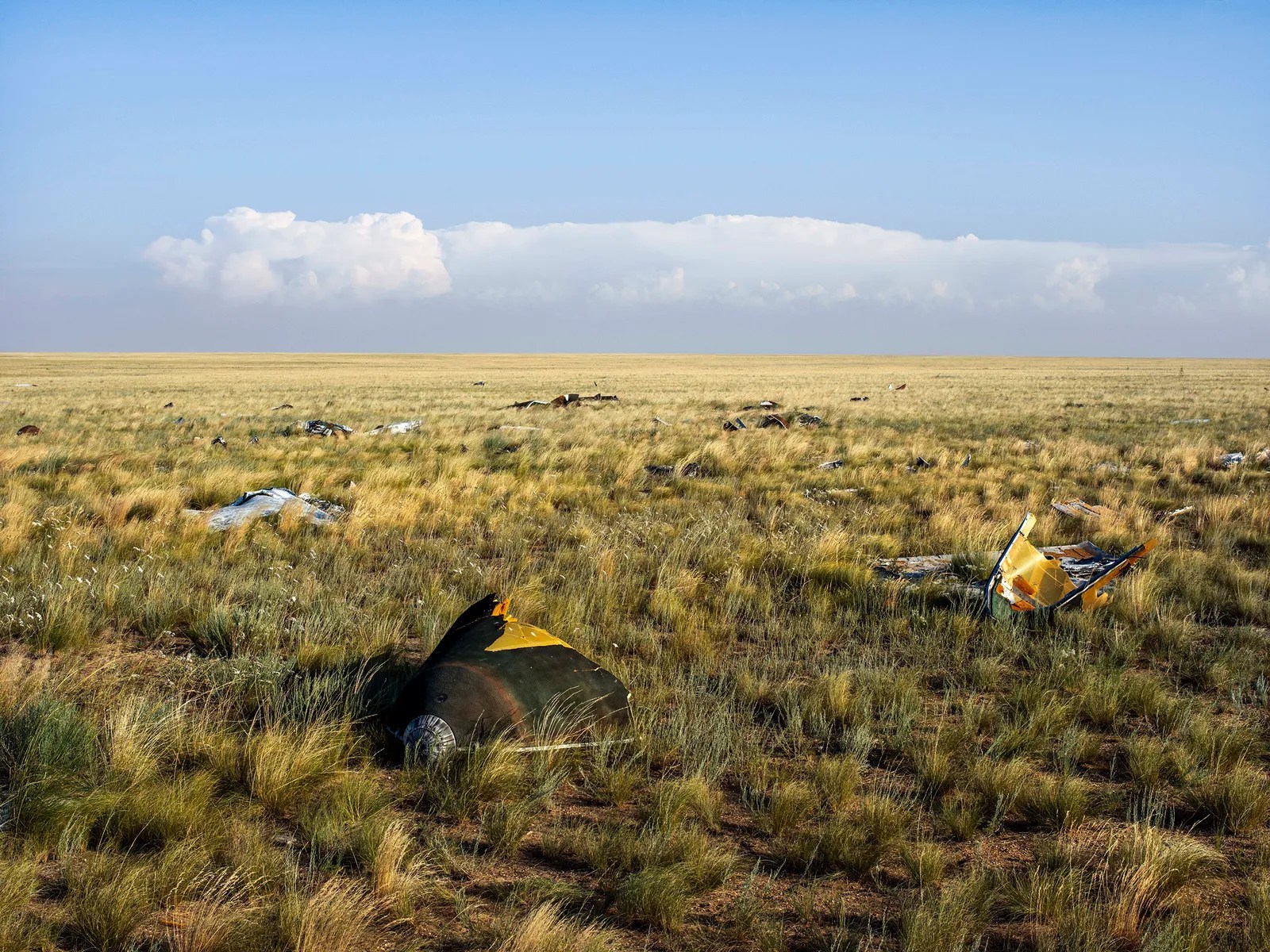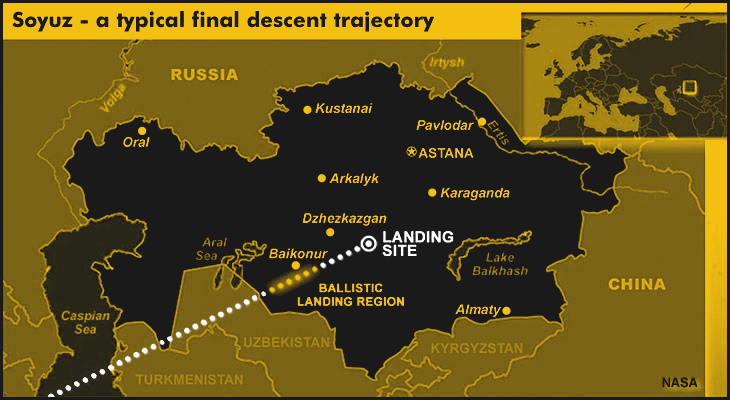In a recent photo essay for the New Yorker magazine, author Keith Gessen and photographer Andrew McConnell share what life is like for the residents around the launch facility and where Soyuz capsules land in Kazakhstan.
Read the article for a brief history of the Baikonur spaceport and observations from the photographer’s15 visits to observe Syuz landings and the extreme separation between the local farmers and the facilities built up around Baikonur. A local ecologist even compares the family farmers toiling around the busy spaceport to a scene our readers may be familiar with on Tatooine.

We assumed Soyuz capsules splashdown somewhere near Russia just like the iconic images of Apollo capsules. While they can land in water, their 13 target landing sites are all on land in the sparsely inhabited Kazakhstan steppe (flat grasslands). According to russianspaceweb.com, the descent is slowed with a single large parachute. When the capsule is about one meter from the ground, solid rocket thrusters fire, “reducing the descent speed of the capsule to between 0 and 3 meters per second.” We learned that the rockets’ force, not the crumple zone on the capsule, causes so much stress that each is only suitable for a single use.

While there is fascinating engineering in the Soyuz landing, from the landing rockets mentioned above to parachute wires acting as antennae for transponders to the multiple automated and backup systems, there is some hacking by the local farmers as well. The cast-off parts of the single-use capsules become scrap metal for use around the farms, leading to haunting images that seem to come from a dystopian future where space flights are as common as commercial air travel but still out of reach for many.
